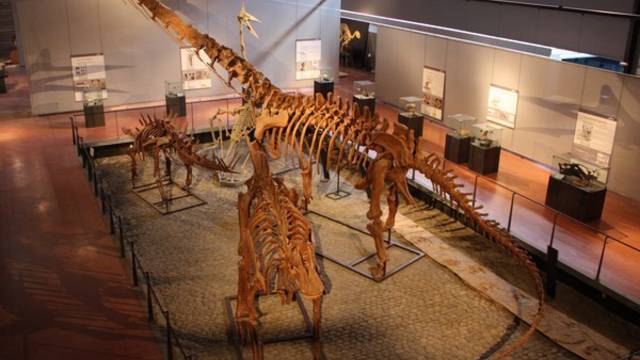History
At the end of the 10th century, both the abbeys of St Hilaire and Alet belonged to the parishioners of St Michel de Cuxa, in the realm governed by the counts of Carcassonne. The counts favoured the Saint-Hilaire Abbey, to the detriment of the one in Alet. Following a period of prosperity during the 12th century, the monastery fell into decline due to poor management by certain abbots and the consequences of the Albigensian Crusade. In 1318, Alet became the seat of a new diocese. The Abbey's Romanesque church was transformed into a Gothic cathedral, whilst the village was enriched with well-heeled buildings. During the Wars of Religion, the town was besieged multiple times; at times, it was controlled by the Catholics, and at other times by the Protestants. The damage was so severe that the cathedral was abandoned in favour of a temporary church, which then became the new cathedral. It wasn't until the arrival of Prosper Mérimée in the 19th century that a restoration project for the old abbey was organised.
Things to explore
As you walk

The viewpoint
Just after the Gate of Cadène, a narrow path climbs up a gentle slope through Montpellier maples, young oaks and broom brushes, before arriving at a sloping ledge. Remains of the town ramparts dominate this site, which has magnificent views over the village and valley. You will discover secret gardens, a large medieval wall and the durable ruins of the abbey-cathedral. Sitting on the little wooden bench overlooking this pink and green landscape, you will feel the serenity of a moment suspended in time.

Saint-Salvayre
700m high, this 17th-century hamlet overlooks the town of Alet. The chapel contains a collection of Roman sculptures, which come from the 12th-century abbey. From a superb viewpoint on the pastures, you can see both the Aude Valley and the Pyrenees. It's also a well-known climbing spot. A menhir is hidden in the heath. This plateau is a area of natural interest, which includes the Lavalette caves. These 3 caves have undoubtedly been inhabited for many centuries. Excavations have uncovered material from the end of the Neolithic era, and the people of Alet hid here during the Wars of Religion. Today, it is an important place of refuge for the delicate bats.

The Roman road
Starting behind the swimming pool, a path follows the River Aude up to Limoux. It's a section of the former Roman road that linked the Aude Valley to the Pyrenees. This easy walk takes in stunning views of both the turbulent and gentle stretches of the river, and the canoes and kayaks which travel along it.
About

The Dinosaur Museum
The Upper Valley of the Aude is the biggest European fossil site for the last dinosaurs and their eggs. In this Cretaceous red clay soil, where Chardonnay and Pinot Noir is produced, wine-growers have made some astonishing discoveries. Two Anne de Joyeuse vintages are named after unique specimens that were discovered here: Ampelosaurus Aticis - 'the Dinosaur of the Aude' - and Gargantuavis - 'the bird that likes wine'! They are displayed in the Dinosaur Museum in Espéraza, which tells the history of the Earth in a fun, educational and dynamic way, across 2500m2 of exhibition space. Whilst the reptiles, mammals and plants all have their place, the dinosaurs are the real stars of the show! Look forward to a surprising encounter with a T.Rex! (Find out more).

Quillan
Located along the road between Fenouillèdes and Alet-les-Bains, Quillan is a 13th-century town in the shadow of its castle, owned by the archbishop of Narbonne. This charming little town on the banks of the Aude is a popular destination for outdoor activities, especially hiking and mountain biking. The Cathar Trail passes over the '3 quilles' (the 3 hills after which Quillan is named), before breaking off for the Sault plateau, Camurac and Montségur. Numerous circuits are also possible around the steep slopes surrounding Quillan. White water sporting facilities are available, both in the nearby Pierre Lys gorge or in the town centre. Along the promenade of Pouzadou Quay, admire the skills of the kayakers or the anglers launching their rods. Below the castle, the roads around the church of this peaceful fortified town come alive with bustling café and restaurant terraces (find out more).

Millinery Museum
Next door to the Dinosaur Museum, the Millinery Museum commemorates Espéraza's internationally-renowned hat-making industry. In 1929, this industry employed 3000 workers in 14 local factories. The exhibition contains machines, videos and photos on display. 'Le Chapeau de France', a hat manufacturer, has gathered together pieces of its heritage, dating back to the 19th century. Located in Montazels, close to Espéraza, it is the last felt hat manufacturer in France (find out more).

A large waterway shipping industry developed around the transportation of timber in the Upper Valley of the Aude. To transport logs from the forests of Fanges, Picaussel and Capcir, the people of the Aude used timber rafting, a technique that dates from the Renaissance, or even earlier. The timber was transported to the Port of Quillan by land. 10-15 logs at once were tied together using hazel branches. The men that operated these rafts (or 'carras'), were highly sought-after because many years of experience, strength and courage were needed to overcome the obstacles in the surging and busy river. These men were known as the 'carrasiers'. Their journey took them from port to port until they reached the sea.


















